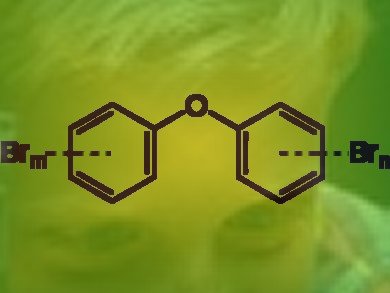Polybrominated diphenyl ethers (PBDEs) are a class of flame retardants used till 2006 in textiles, furniture, and electronic products. Several studies have documented disruption of thyroid homeostasis, important for normal brain development, in pre- and postnatally exposed animals and in humans. Widespread PBDE exposure to humans, with higher levels measured in children than adults, has been found.
Asa Bradman, University of California, Berkeley, USA, and colleagues analyzed 10 tri- to hepta-BDE congener levels in blood collected from 7-year old Mexican-American children living in an agriculture community in California (n = 272). The most frequently detected PBDE congeners in child serum were BDE-47, -99, -100, and -153, all of which were measured in >99 % of the children. Multiple linear regression models were used to examine associations between child total PBDE levels (ng/g lipid) and determinants of exposure.
One of the strongest predictors of exposure – besides total PBDE levels in maternal serum during pregnancy and duration of exclusive breastfeeding – was having no safe place to play outside. The tested population is primarily low-income, and neighborhoods are often perceived as unsafe and there may also be limited access to parks or other outdoor play areas. This may be an indicator for more time spent indoors, where most PBDE exposures occur via house dust.
The findings confirm that exposure to the penta-BDE mixture is ongoing. Additional research is needed to assess the health impacts of these exposures.
- Factors Associated with Serum Polybrominated Diphenyl Ether (PBDE) Levels Among School-Age Children in the CHAMACOS Cohort,
Asa Bradman, Rosemary Castorina, Andreas Sjödin, Laura Fenster, Richard S. Jones, Kim G. Harley, Jonathan Chevrier, Nina T. Holland, Brenda Eskenazi,
Environ. Sci. Technol. 2012.
DOI: 10.1021/es3003487




